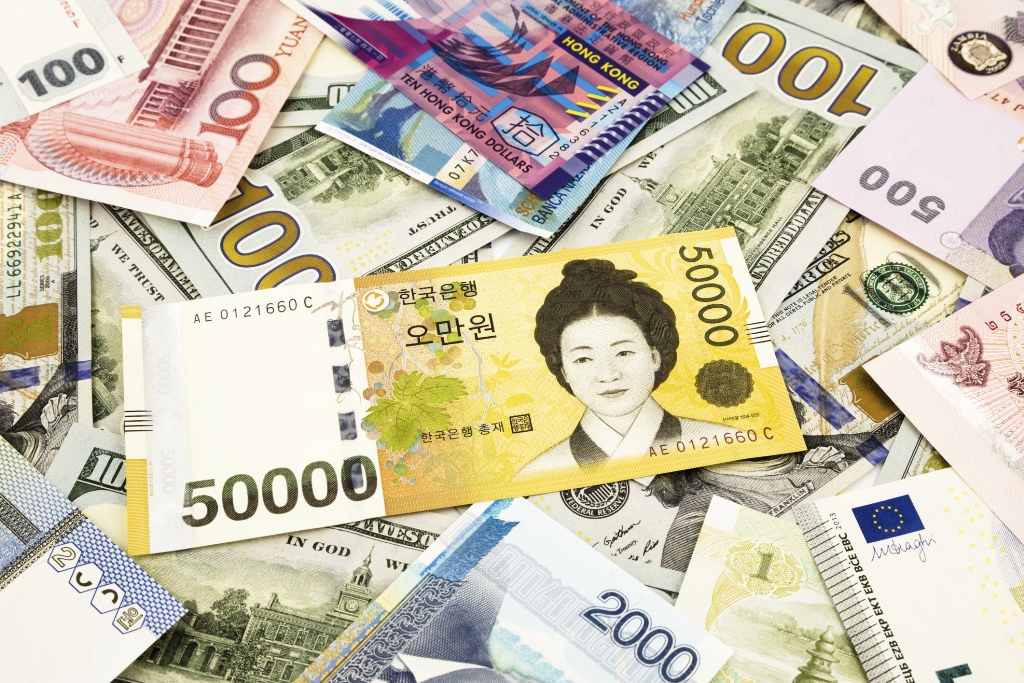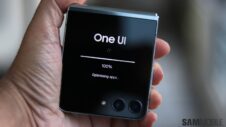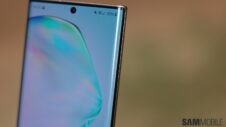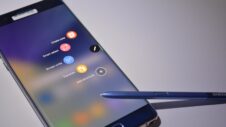We’ve seen the cost of the next Galaxy already, enough to know that Italy will have it a little harder than the rest of us with buying the upcoming devices, but some believe these new prices are indicative of an upward trend for Samsung: that is, the upcoming prices are part of a phone trend for Samsung that will continue to rise with each new passing year.
That motivated us here at SamMobile to get down to business and spend time tracking the costs of the Galaxy S series since the Galaxy S2. In this study, four markets and their off-contract smartphone costs were considered: 1) USA, 2) Europe, 3) Korea (Samsung’s home country), and 4) India. In conducting this study, we also had to focus on both specific prices and price ranges, so don’t be surprised if your specific smartphone costs are slightly more or less than the prices provided here.
As for the phones discussed in this study, the mainstream Galaxy S phones (no Note phones) are the only ones taken into consideration. What this means is that phones such as the Galaxy S Active series, Galaxy S Neo, or the Galaxy S Mini series, are not included here.
Are Samsung’s Galaxy smartphone prices rising at an alarming rate? Take a look at the evidence and be your own judge.
USA
First up, let’s start with the USA. We examined the four major carriers in the States (AT&T, Verizon, T-Mobile, and Sprint).
The price of the Galaxy S2 ranged from $499.99 (Sprint) to as high as $549 with AT&T. AT&T is always on the pricier side of the equation when it comes to phone prices, so the results here aren’t all that surprising. With the Galaxy S3, though, the prices stayed the same for the most part, with the exception being the rise of T-Mobile pricing from $529.99 to $629.99. Verizon didn’t sell the Galaxy S2 but did sell the Galaxy S3 for $599 (16GB) and $699 (32GB).
T-Mobile’s Galaxy S3 pricing remained intact for the Galaxy S4 ($629.99), but Sprint decided to raise its Galaxy S4 price by $100 to $649.99, $10 more than the price hike at AT&T ($549.99 for the S3 to $639.99 for the S4). Verizon’s Galaxy S4 price was just $50 more than its $599.99 Galaxy S3. Prices remained solid for the Galaxy S4 overall, though.
T-Mobile raised its pricing by $30 for the Galaxy S5 (from $629.99 to $660), while Sprint and AT&T remained practically the same (AT&T’s pricing rose just $10 more for the Galaxy S5 than the S4). Verizon dropped its price by $50, from $649.99 to $599.99. Verizon remained unchanged for the Galaxy S6 ($599.99), though T-Mobile and AT&T saw small increases. Verizon’s Galaxy S7 saw the highest price increase of all four major carriers, with its pricing being raised from $599.99 in the S6 to $672 in the Galaxy S7.
The largest price hikes of any of Samsung’s smartphones come with the Galaxy S6 edge and the Galaxy S7 edge. While the Galaxy S6 was priced at $679.92 at T-Mobile, the T-Mobile Galaxy S6 edge came in at $779.76 (a $100 difference). Sprint priced its Galaxy S6 edge $120 more than the regular S6 ($648 vs. $768) and Verizon’s S6 edge was $100 more than its regular S6 ($699.99 vs. $599.99). As for AT&T, its S6 edge pricing was $130 more than the S6 ($814.99 vs. $684.99). Prices slightly hiked with Verizon and AT&T in the Galaxy S7 but remained approximately the same at T-Mobile and Sprint.
To the surprise of many, the Galaxy S7 edge didn’t rise in price all that much from the Galaxy S6 edge. T-Mobile’s price remained the same ($779.76 for the S6 edge vs. $780 for the S7 edge), Sprint’s price dropped ($768 for the S6 edge vs. $750 for the S7 edge), as did AT&T’s (from $814.99 vs. $795), and Verizon’s rose by $93 (from $699.99 in the S6 edge to $792 in the S7 edge).
Overall, the price examination of the US market shows that Samsung’s smartphone prices have remained steady, with (at most) a $130 price hike. For the most part, though, even with the edge models, Americans have seen harmless price hikes since the Galaxy S2, though smartphone prices have risen from $500 in the S2 to around $700-$800 in later models. Prices are going up, but doing so at a slow and steady rate that few customers would notice.
Europe
In Europe, the Galaxy S2 sold for €400-€500 (or $435-$543.02) and stretched to €500-€600 ($543-651.63) in the Galaxy S3. The UK Galaxy S3 was priced at around €500 while the Germany and Italy Galaxy S3s were priced at around €600. France’s Galaxy S3 was priced even higher (€649, or ~$705 USD). In the Galaxy S4, the cost was rather uniform across the board, with nearly all of Europe paying €600 ($651.63 USD) for it. The one exception was Italy, who saw its Galaxy S3 climb in price from €600 (~$651) for the Galaxy S3 to €700 (~$760 USD) for the Galaxy S4.
All of Europe suffered along with Italy in the Galaxy S5, though, with €700 (nearly $760USD) becoming the common price tag. The Galaxy S6 and Galaxy S7 remained at the same pricing as the Galaxy S5 (€700), though Galaxy S6 edge buyers paid €150 more than their flat-paneled peers (€849, or $922, for the S6 edge vs. €699, or $759, for the S6). The price was lowered by €50 for Galaxy S7 edge buyers as opposed to their dual-edge predecessors (€799.99 for S7 edge vs. €849 for the Galaxy S6 edge).
Europe has seen an approximate €300-€400 price hike in smartphone prices since the Galaxy S2, with its pricing being somewhat more pronounced than that of its peers across the Atlantic.
India
The Indian market has had its own price rise with Samsung smartphones as well. The Galaxy S2 was priced at Rs. 32,890 ($505 USD) when it went on sale, but rose to Rs. 43,180 ($663.54 USD) for the Galaxy S3 (a rise of Rs. 11,000, or $169 USD).
The Galaxy S4 started something of a roller coaster pricing situation for the Indian market: the S4 came in at Rs. 41,500 (~$637) and rose to Rs. 51,500 ($791) for the Galaxy S5. The Galaxy S6 price dropped to Rs. 49,900 ($766 USD) and then to Rs. 48,900 ($751) in the Galaxy S7. The Galaxy S6 edge and Galaxy S7 edge weren’t cheap for the Indian market, but Samsung lowered the price of the Galaxy S7 edge to Rs. 56,900 or $ 874 USD (down Rs. 2,000 from the Rs. 58,900, or $905 USD, price tag of the S6 edge).
The Indian market has seen its Samsung Galaxy smartphones rise in price by about $400 over the last 5 years, though, as can be seen, the S6 edge and the S7 edge were the most expensive of the lot.
Korea
Korea is Samsung’s home market, and, like the US market, has had its Galaxy smartphone prices remain consistent. The price of the Galaxy S2 was 858,000 KRW (“KRW” is short for “Korean Won,” for those who may not know), or $773 USD, which made it more expensive than the Europe and American markets. The Galaxy S3 jumped 42,000 KRW to 900,000 won (or ~$811).
The Galaxy S4 has seen a drop in pricing, coming in at 890,000 won. After having its S3 price lowered, Samsung lowered the price of the Galaxy S5 (866,800 won), Galaxy S6 (858,000 won), and Galaxy S7 (836,000 won). The Galaxy S7, off-contract, is more inexpensive than the Galaxy S2 at its release.
The Galaxy S6 edge comes in at 82,000 won more than the regular Galaxy S6, and the Galaxy S7 edge was 88,000 won more than the Galaxy S7. Between the S6 edge and S7 edge, though, Samsung lowered the price of the dual-edge model from its predecessor (940,000 won for the S6 edge vs. 924,000 won for the S7 edge).
All in all, Korea’s pricing on Samsung Galaxy smartphones has stayed consistent, even more so than the US market, and has seen price drops from earlier smartphones. Of these four markets, Korea is the only market where Samsung has lowered the price annually in order to win over its countrymen.
Conclusion
This study was done to examine the rise in Samsung Galaxy smartphones over the last 5 years, and it shows that Europe and India have had it hard as compared to markets like the US and, especially, Korea. Korea fared the best out of all the other three markets, as it was the only market to save money on iterations each year and see regular price drops. The US market’s $50 and $100 price hikes are indicative of a culture where carriers still dominate, and are allowed to inflate prices if carriers so decide.
This examination gives a good interpretation by which to examine the impact of Galaxy S8 and Galaxy S8+ prices on the worldwide market, to see just how Europe will fare this year. From what we know, however, Europe’s pricing looks to stay around €799 for the Galaxy S8 (the price of the Galaxy S7 edge, €99 more than the Galaxy S7) but will rise for those picking up the Galaxy S8+ (€899, or $976.36 USD).
Sure, these prices are steep, but, as the saying goes, you have to “pay to play” not only in life, but in the tech space.
What do you think of these prices?







